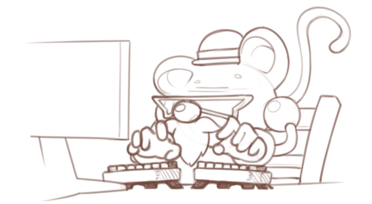I’ve written some magic templates that I assume are not easy to read by those who don’t know.
But this is seemingly unmaintainable… terrifying… and kind of neat.
This doesn’t actually read as serious TypeScript, moreso as someone trying to showcase unhinged code.
I’d be happy to be proven wrong with a link to the source code so that I can look the beast in the eye.
Take a look at some typescript libraries and frameworks and you will see stuff like this. Completely unreadable mess.
I have seen image recognition or text RPGs with type script types, but
const ok:true = true as Grid< 4, 9, 2Wtfnote that it continues onto the next line
Styled Components’ type system is one of the most impressive and most fucked up things I’ve ever had to dive into.
For example?
I like to think I can usually look at code in languages I don’t know and still get the gist of what it does but I am drawing a complete blank. Is this even slightly legible to anyone and if yes please explain
TL;DR:
Grid<A,B,C,D,E,F,G,H>simplifies to true, if and only if it is a 3x3 magic square.full explanation
Fifteenis an array of length 15T<A,B,C>checks if an array of lengthA+B+Cis equivalent to an array of length 15, thus checking ifA+B+Cis equal to 15And<A,X>is simplifies toXifAis true, else it simplifies tofalseDf<A,B,X>checks ifAandBare Diffrent , simplifying toXif they areGrid<A,B,C,D,E,F,G,H>first checks if every row, column and diagonal is equal to 15, then checks if every item is unique.
After 5 minutes of staring at it: Its typesystem sudoku. Each row and each col in the grid must add up to 15 (T<>), bit each number in the grid must be different (Df<>).
Grid will only be a type alias for the value true (google “Dependent types”) only if all Type Parameters (wich are values) hold up to the Sudoku conditions).
The file would not compile with “true as Grid” when grid type-aliases to false.
Fun to understand.
EDIT: too late
Why tf
I think I can pinpoint the exact date things went sideways. It was a dark day on Monday, October 1, 2012.
I’m really trying to figure out what this is used for and why it was done this way.
I’m not having much success
Looks like something that checks that the rows in a grid att up to 15. Why? IDK, a game?
Yeah, and apparently type checking/inference is trivial, says the “CTO” of Xitter. /s
I don’t want to look at this anymore
Show that to your niece and nephew and you’ll be a certified Haxxor™
Can confirm.
If TypeScript didn’t have terrible type-level ergonomics, this wouldn’t look so bad—even if this toy example is largely just a brain exercise
That’s why macro_rules!
This is not rust :D Nothing will save typescript
Man these programmers are getting unhinged. Even I can’t read this shit.
Too much focus on compile time.





